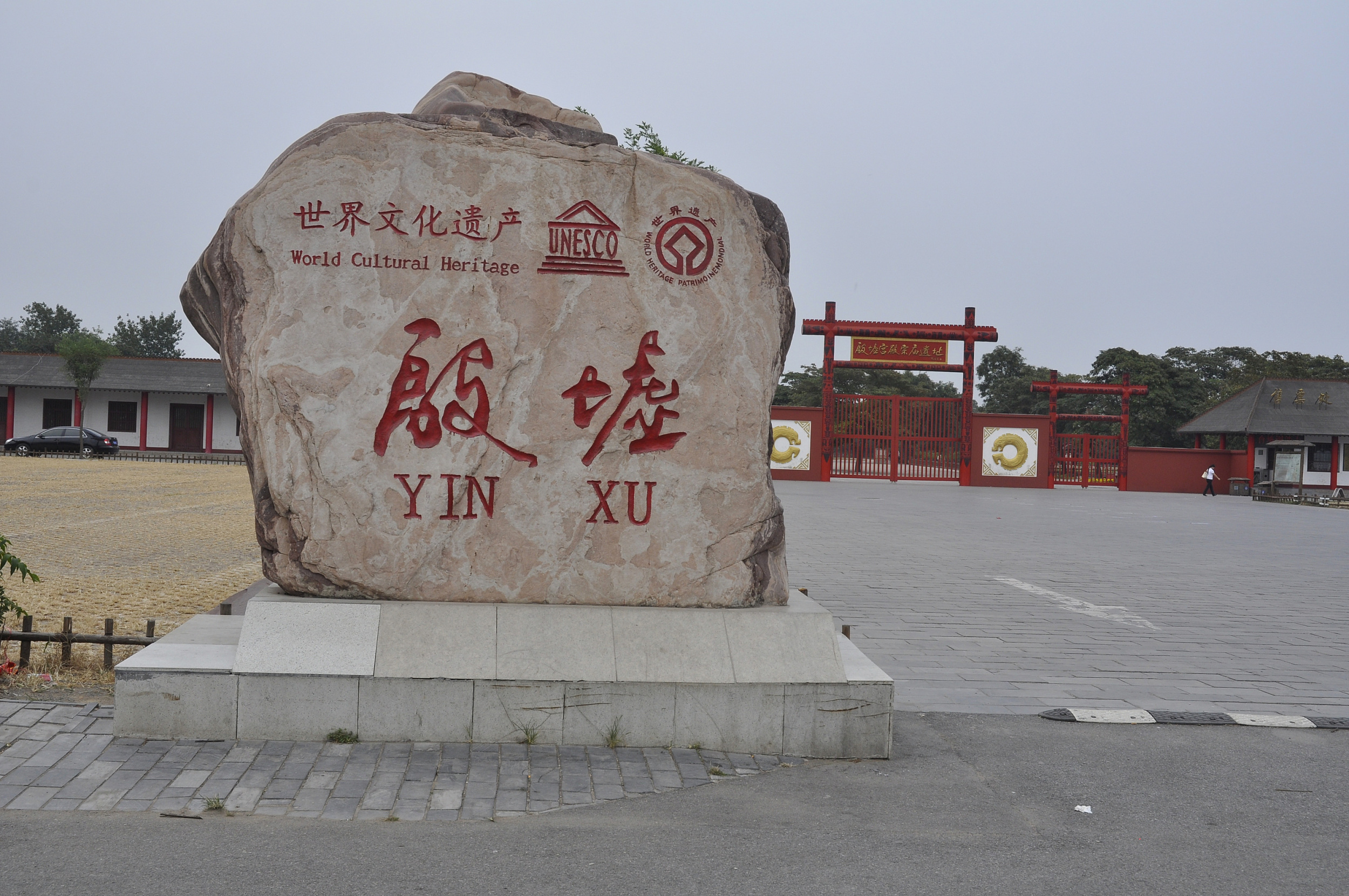Yin Ruins Tell Ancient Stories

The site of World Cultural Heritage: Yin Xu, Anyang, Henan province. (PHOTO:VCG)
By Staff Reporters
Yin Ruins are the remnants of the capital of the late Shang Dynasty (1600 BC-1046 BC). It dates back 3,300 years, and its existence has been confirmed by historical documents, oracle bone inscriptions and archaeological excavations as the first capital site in Chinese history.
Inscribed on the UNESCO World Heritage List in 2006, the Yin Ruins site showcases the ancient Yin-Shang culture, and was named the most important of China's 100 archaeological discoveries in the 20th century. It is regarded as the birthplace of Chinese archaeology and the cradle of oracle bone inscriptions.
The only living ancient characters
Most people who have heard of Yin Ruins across the world, however, associate the site with the discovery of oracle bones and tortoise shells with mysterious ancient inscriptions on them. The oracle bone inscriptions discovered at the Yin Ruins are considered to be the oldest Chinese inscriptions.
Oracle bone inscriptions from ancient China, hieroglyphs from ancient Egypt, cuneiforms from ancient Babylon, and Mayan glyphs from Mesoamerica are among the world's most famous ancient writing systems.
Of these systems the oracle bones are the only one that has survived, evolving over time into the current Chinese writing characters. According to UNSECO, inscriptions on oracle bones found in Yin Ruins bear invaluable testimony to the development of one of the world's oldest writing systems, ancient beliefs and social systems.
According to a report from Xinhua, roughly 160,000 fragments of oracle bone have been found to date. Only 1,600 of the 4,300 characters on them have been deciphered. Historically, the Shang people employed oracle bone inscriptions as a way to document their rituals of divination and sacrifice. All aspects of Shang dynasty life, including religious rituals, administrative matters, agricultural and military activities, were subject to divination. Today, oracle bone inscriptions have become increasingly valuable resources for understanding the earliest stage of Chinese grammar and the initial layout of Chinese characters.
Largest unearthed bronze vessel in the world
Apart from the time-honored oracle bone inscriptions, delicate bronze ware, jade and ivory articles, production tools, and articles for daily use, have enhanced Yin Ruins' reputation internationally.
The most famous of the artifacts is the iconic Houmuwu Ding, formerly known as Simuwu Ding. Ding is a type of Chinese ritual bronze ancient cauldron.
The four-legged bronze cauldron measures 133cm in height and 875kg in weight, which makes it the world's biggest bronze relic ever uncovered. The vessel shows the high level of craftsmanship as well as economic and cultural development of the late Shang Dynasty.
Remembering a female warrior
The famous tomb of Fu Hao has also been one of the most important archaeological findings at the Yin Ruins since 1928. It is the only tomb of a member of the royal family during the Shang Dynasty to have remained intact.
Fu Hao was an ancient queen and warrior whose remarkable life story can be pieced together from objects found in her lavish tomb. Her story was one of the many recorded on the oracle bones unearthed.
She was the wife of King Wu Ding, who led the Shang Dynasty to its zenith. From these oracle bone inscriptions, we learn that Fu Hao was not only a queen and mother, but she also held a high status as a military head, being second in command to the king.







